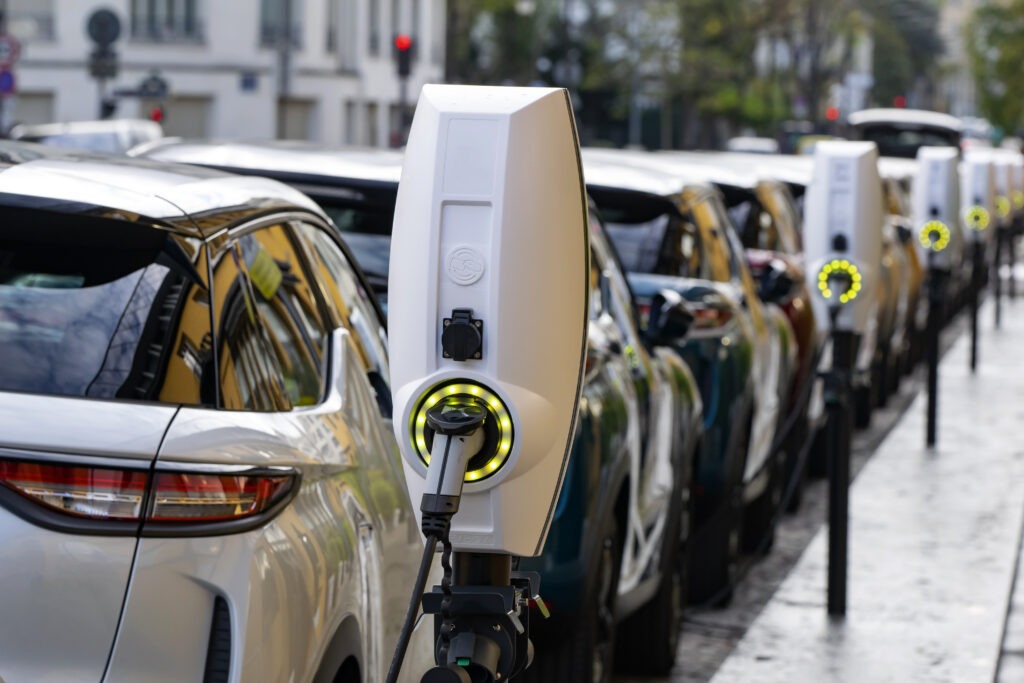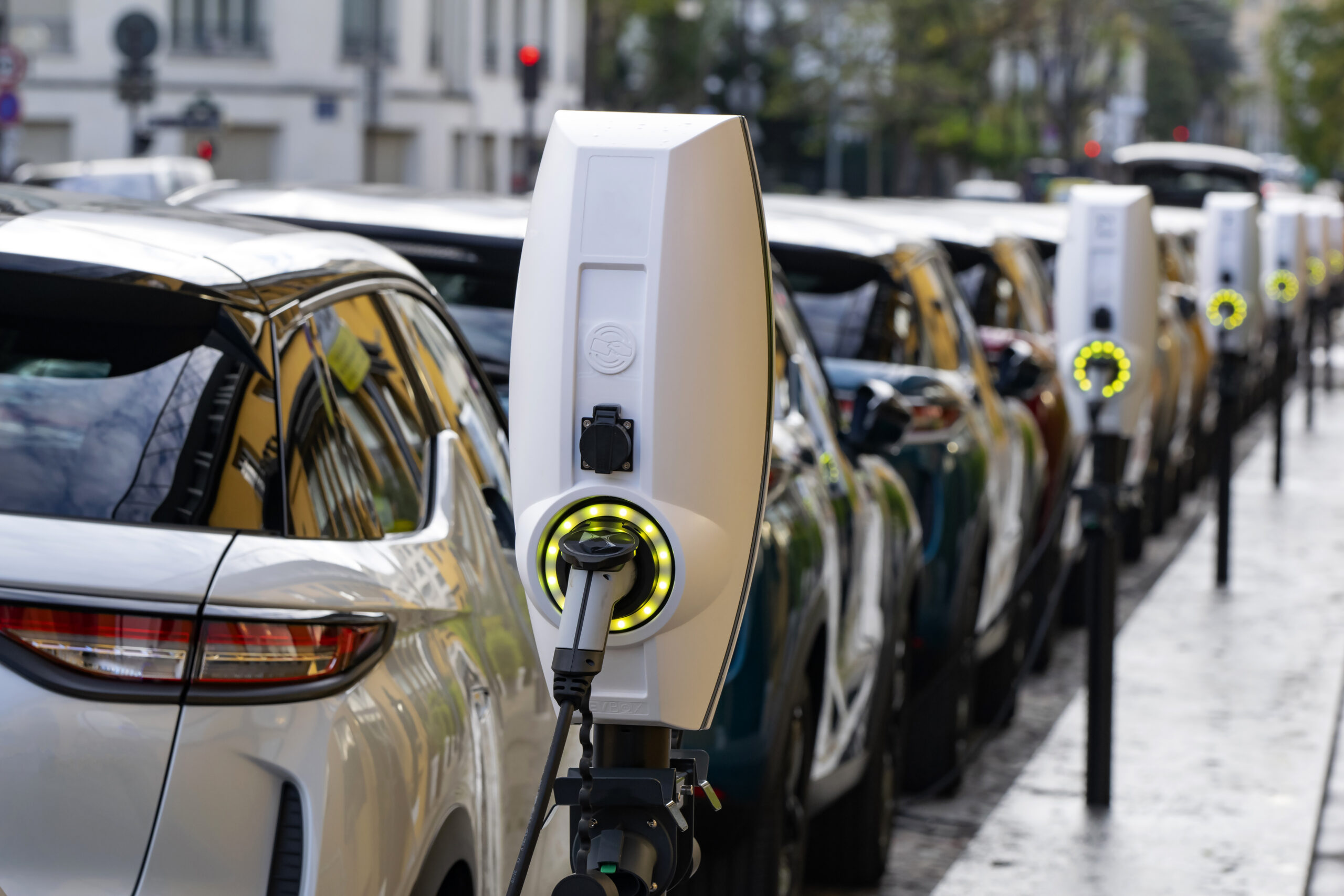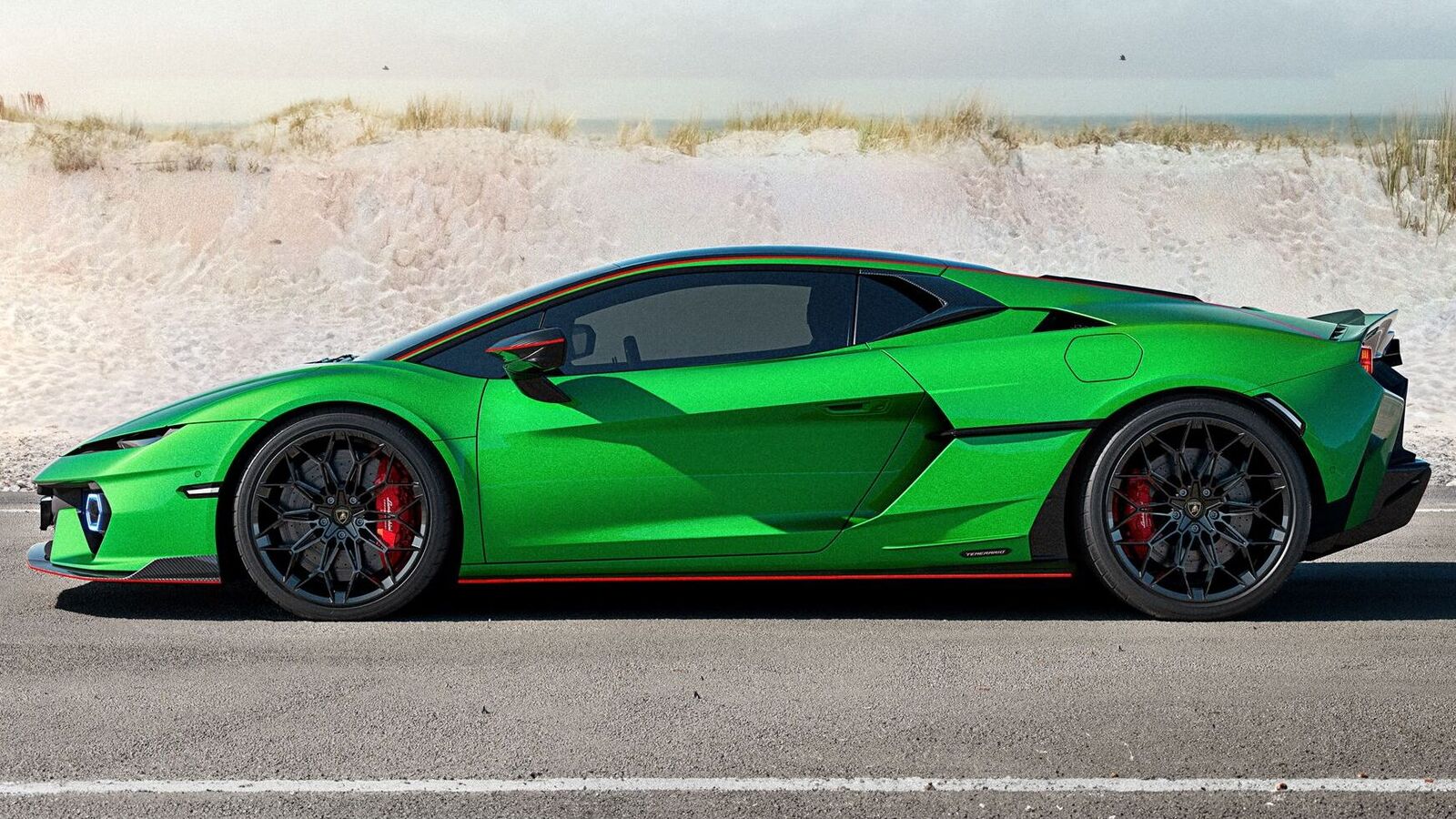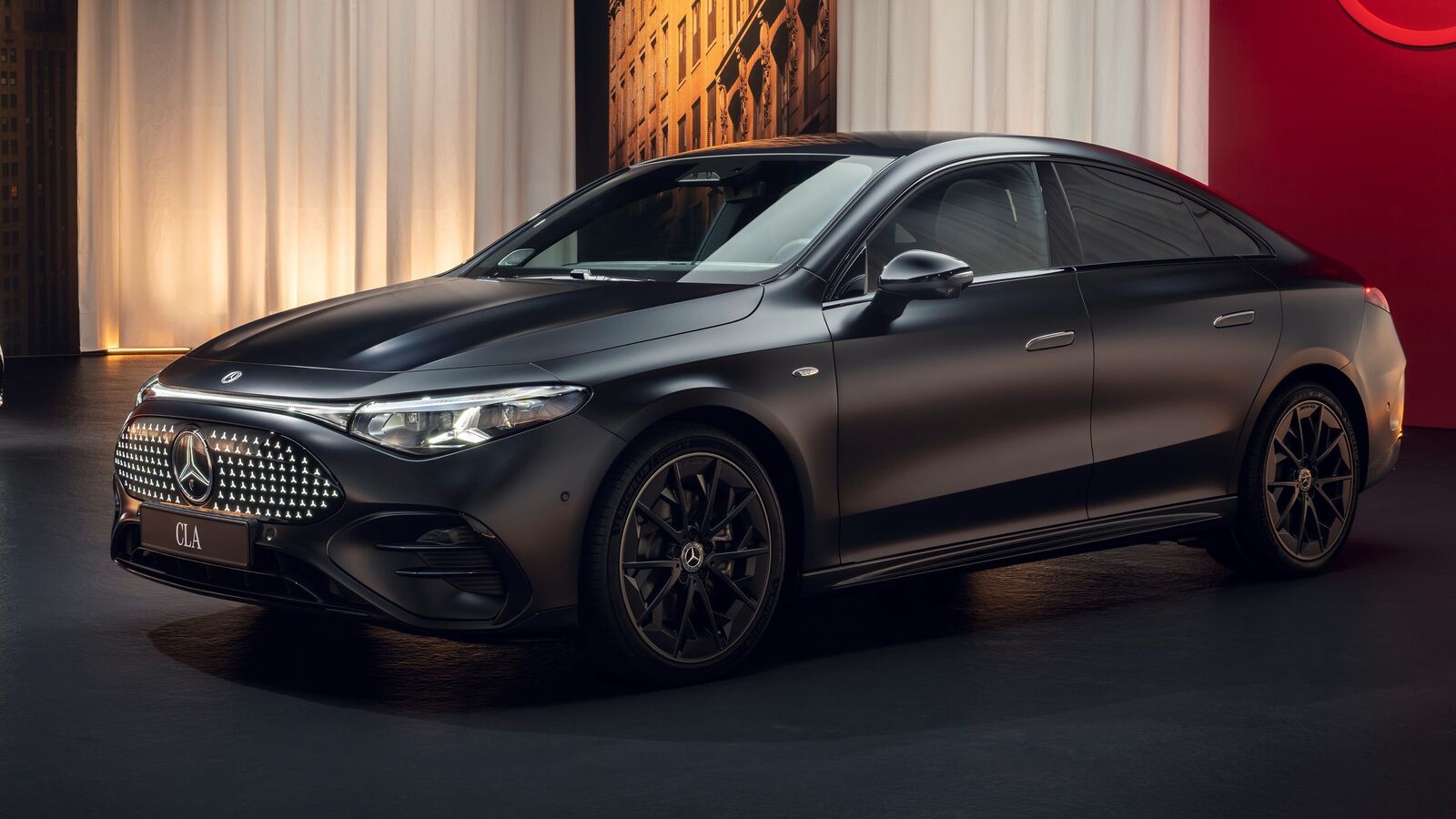22 April 2025

Europe’s battery-electric vehicle (BEV) market surged in February, as plug-in hybrid registrations (PHEVs) stagnated. Tesla led BEV sales, despite dropping deliveries. Tom Hooker, Autovista24 journalist, assesses the data.
European BEV sales soared by 25.6% in February, reaching 166,319 units. This equated to a gain of 33,924 deliveries year on year. The improvement followed double-digit growth in January. BEV volumes grew by 30.3% across the first two months of the year, reaching 331,890 registrations.
Conversely, PHEVs have struggled so far this year. The technology declined by 0.9% in February, with 72,421 sales. This was its lowest monthly figure since August 2024. The technology delivered 149,149 units between January and February, equating to a decline of 2.5%.
Compared to 12 months ago, BEVs increased their plug-in market share. The powertrain made up 69.7% of volumes in February, an improvement of 5.3 percentage points (pp) year on year. Meanwhile, PHEVs fell from a 35.6% share to a 30.3% hold of the market.
Tesla tops table
The Tesla Model Y was Europe’s best-selling BEV in February, recording 9,173 registrations. The win came after the crossover fell to third in January.
The model reclaimed the lead despite deliveries declining 54.4% year on year, representing a loss of 10,785 units. It accounted for 5.5% of total BEV sales in the month, down 9.6pp compared to February 2024.
It sat 2,201 deliveries ahead of its sibling, the second-place Tesla Model 3. The sedan posted 6,972 registrations, a 14.2% drop from one year ago. However, this can be seen as a positive result for the sedan, which finished 11th in January. It captured 4.2% of the market, down from 6.1%.
The brand appeared in headlines recently as it was targeted by vandals and protestors. It faced backlash at its German plant, with employees demanding better working conditions, according to the Financial Times (FT).
Record Renault 5 result
Third went to the Renault 5, recording 6,264 deliveries with the Alpine A290. This was the hatchback’s highest finish and unit total since it began registrations in June 2024. It represented 3.8% of overall BEV sales.
Just 45 units behind was the Volkswagen (VW) ID.4 in fourth, with 6,219 deliveries. The model improved volumes by 167.3% year on year. Its share increased to 3.7% from 1.8%.
The carmaker is expected to lower its financial forecast for the current fiscal year, as reported by Handelsblatt. Analysts at UBS expect that US automotive tariffs will likely reduce the margins and profits of multiple German carmakers.
The Skoda Enyaq finished fifth in the BEV table, thanks to 5,681 registrations. This marked a 33% rise in sales. Yet, this was its lowest monthly figure since July 2024. It provided the SUV with a 3.4% share, up 0.2pp compared to 12 months ago.
More VW BEVs
The VW ID.7 finished sixth with 5,475 deliveries. While this marked a substantial increase from a year ago, February 2024 only marked its sixth month of sales. The BEV made up 3.3% of the market, growing from its previous 0.4% share.
Its sibling, the ID.3, followed in seventh, recording 5,362 registrations. This marked a 109.2% increase year on year. It accounted for 3.2% of overall BEV volumes, up 1.3pp compared to last February.
The Kia EV3 was just 22 units behind, with 5,340 sales in its fifth month of deliveries. The crossover also took a 3.2% market share. The model recently won the World Car of the Year title, judged by a panel of 95 automotive experts from 30 countries. This adds to its accolades, following on from its UK Car of the Year title.
The brand recently announced the rollout of its generative AI-powered voice assistant to customers in Europe. The system allows users to engage in smooth and natural conversation with their Kia.
In ninth was the Audi Q4 e-tron, reaching 5,120 registrations. Compared to February 2024, this equated to a 29% improvement. The SUV captured 3.1% of the market, up from 3%. This meant that five VW Group models featured in February’s top 10 BEV table.
The Citroen e-C3 landed 10th, with a record 4,987 units in its 11th month of deliveries. This gave the BEV a 3% market share.
Tesla back in first
Across the first two months of 2025, the Tesla Model Y was Europe’s best-selling BEV, thanks to its February performance. This meant the crossover jumped from third to first in the year-to-date table, recording 15,091 registrations. It made up 4.5% of total registrations.
The VW ID.4 remained in second, with 13,060 deliveries and a 3.9% market share. Then came the Skoda Enyaq which dropped from the lead, posting 12,398 sales and a 3.7% share.
The next two models retained their positions from January. VW’s ID.7 finished fourth, with 11,384 units and accounting for 3.4% of overall volumes. The Kia EV3 was 140 units behind, also taking a 3.4% market share.
The combined total of the Renault 5 and Alpine A290 rose to sixth, recording 10,880 registrations. The hatchback models made up 3.3% of the market in the first two months of 2025. This meant the VW ID.3 fell by one position to seventh, with 10,831 deliveries and a 3.3% share.
After a positive February performance, the Tesla Model 3 stepped up to eighth. The sedan took a 3.3% market share with 10,798 sales. The result meant that positions six to eight were separated by just 82 units.
The Audi Q4 e-tron fell one spot to ninth, recording 9,600 registrations and capturing 2.9% of the BEV market. Rounding out the top 10 was the BMW iX1, which represented 2.5% of BEV volumes with 8,195 deliveries. Like VW, UBS analysis forecast a worsening financial situation for BMW, with returns and earnings expected to fall this year.
Volvo victorious again
The Volvo XC60 was Europe’s best-selling PHEV for the fifth consecutive month, thanks to 4,180 registrations in February. However, this was the SUV’s lowest volume month since August 2024 and marked a year-on-year decline of 2.2%. It accounted for 5.8% of overall PHEV sales, stable from February 2024.
News broke towards the end of March that the carmaker will recall just under 73,000 PHEVs across the world. This includes around 8,000 units in Sweden and 4,825 units in Germany, according to Auto Motor und Sport.
When the battery is fully charged, parked vehicles may experience a short circuit in the high-voltage battery, according to electrive. Owners have been advised to avoid charging their cars. XC60 PHEVs built between 2020 and 2022 are affected, along with S60, S90, V60, XC60, XC90, and V90 models.
Fine performances
The Ford Kuga came second in February’s PHEV table, with 3,487 deliveries. This was a growth of 12.8% compared to 12 months ago. It made up 4.8% of sales, up 0.6pp year on year.
Just 40 units behind was the VW Tiguan, reaching 3,447 registrations. This marked an increase of 278.4% year on year. The SUV also accounted for 4.8% of the market, surging from its previous 1.2% share.
The BMW X1 finished fourth in February, with 3,198 sales, an improvement of 23.5% compared to one year ago. Yet, this was its lowest monthly figure since August 2024. The PHEV took a 4.4% market share, up 0.9pp.
In fifth was the Toyota C-HR which posted 3,015 units. The model has slowly ramped up deliveries since February 2024. It captured 4.2% of the market.
The C-HR may face increasing internal competition in the future. Nikkei reported that Toyota aims to have about 15 electric vehicle (EV) models developed by 2027. This would triple the size of the carmaker’s current plug-in range.
BYD expands in Europe
The BYD Seal U came sixth after completing one full year of deliveries. The model recorded 2,180 sales in February, giving it a 3% market share.
The manufacturer has recently launched in Slovakia and Czechia, electrive wrote. BYD is also building a research base in the UK, as reported by The Independent. However, the European Commission is investigating whether China provided unfair subsidies for BYD’s Hungary plant, as told by the FT.
In seventh was the Cupra Formentor, with 2,090 registrations. This was an increase of 7.7% year on year. The PHEV accounted for 2.9% of overall volumes, up from 2.7%.
The BMW 5-Series placed eighth, posting 1,944 deliveries and recording a growth of 83.4% compared to 12 months ago. This gave the sedan a 2.7% market share, an improvement of 1.2pp from February 2024.
Ninth was taken by the Mercedes-Benz E-Class. The model reached 1,870 sales in the month, a 51.5% rise year on year. It represented 2.6% of total registrations, up from 1.7%. Alongside VW and BMW, UBS analysts also expect losses and a decline in operating profit at Mercedes-Benz.
The Hyundai Tucson rounded out February’s top 10, with 1,785 units. This marked a year-on-year growth of 13.6%. It captured 2.5% of the market, up 0.4pp.
Stable PHEV standings
Across the first two months of the year, the Volvo XC60 extended its lead to 2,105 units over its nearest competitor. The SUV recorded 9,104 sales, giving it a 6.1% share.
Second place went to the VW Tiguan, with 6,999 registrations and a 4.7% share. Then came the BMW X1 with 6,491 deliveries, making up 4.4% of overall PHEV volumes. The Ford Kuga was just 45 units behind, reaching a market share of 4.3% thanks to 6,446 sales. Toyota’s C-HR came fifth with 5,753 registrations, capturing 3.9% of the market.
The Hyundai Tucson secured sixth with 4,173 deliveries, equating to a 2.8% share. This meant the top six kept their positions from January’s table. However, every model from seventh to 10th did not feature in January’s standings.
The Cupra Formentor came seventh, reaching 4,142 registrations and a 2.8% share. Then came the BYD Seal U with 4,035 units, representing 2.7% of total volumes. BMW’s 5-Series landed ninth, with 3,994 sales and a 2.7% share. Rounding out the top 10 was the Mercedes-Benz E-Class, recording 3,799 deliveries and taking a 2.5% share.





